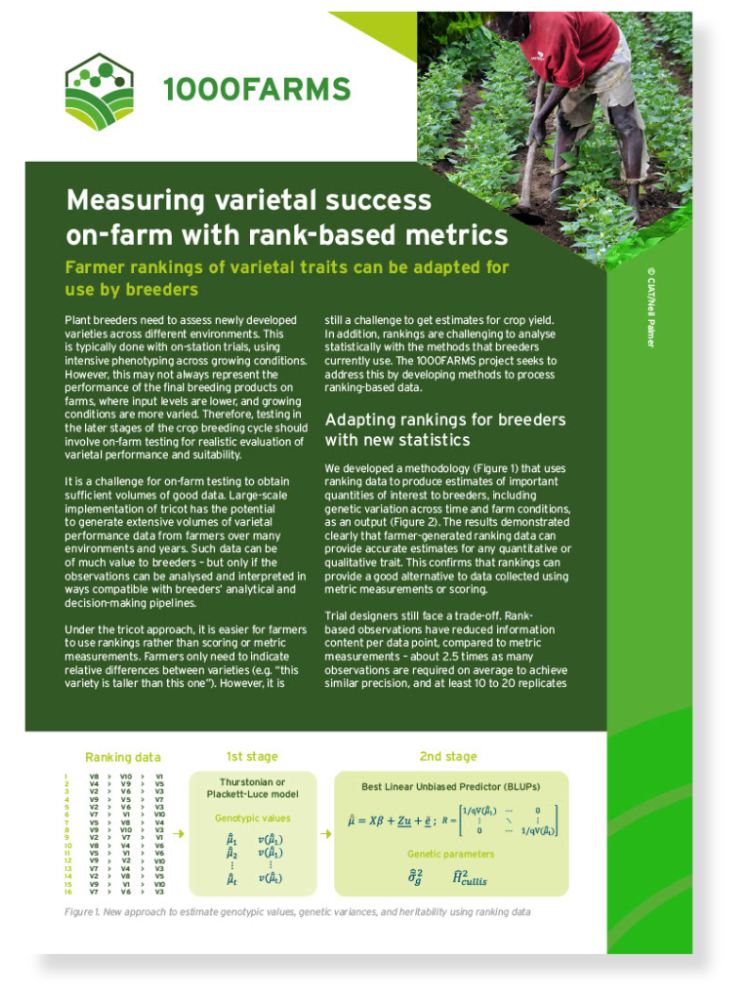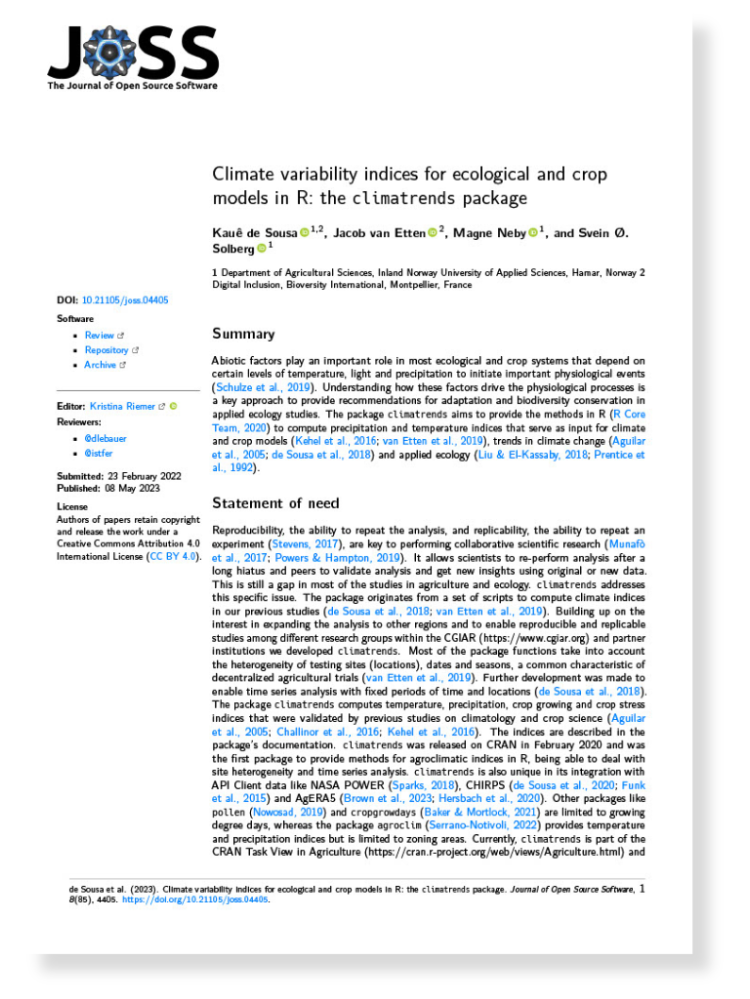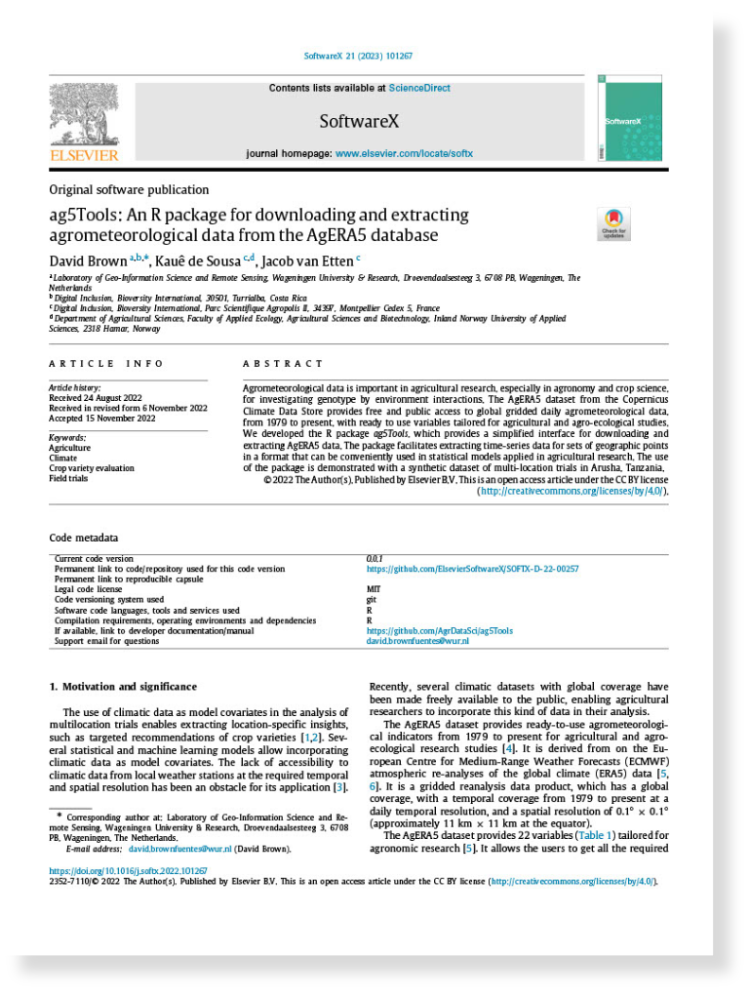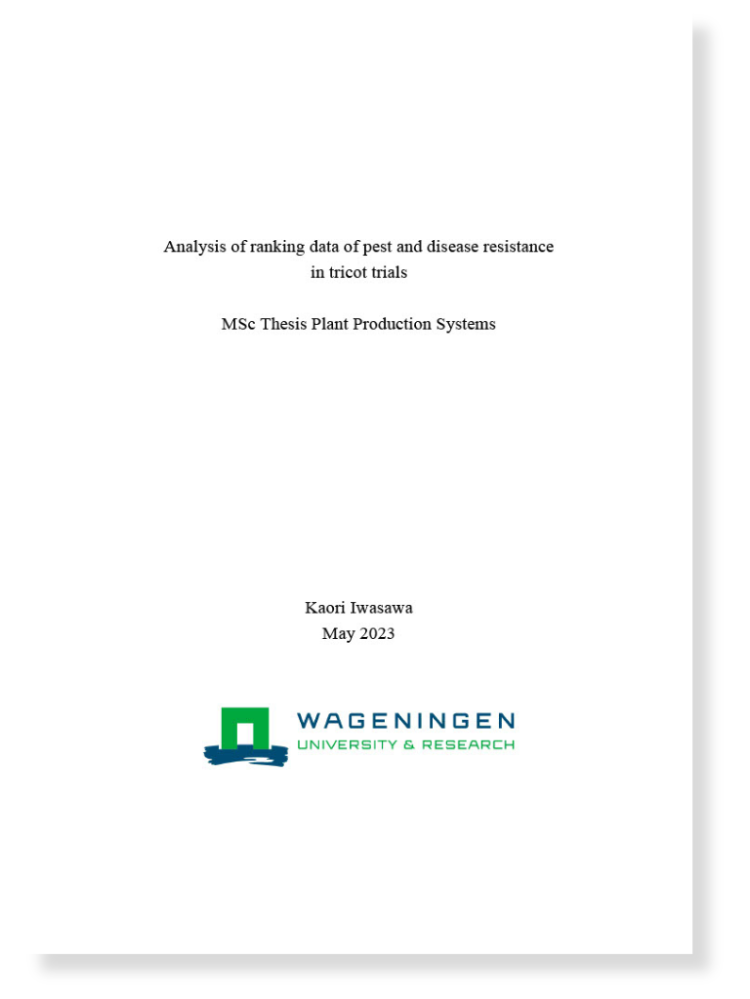This activity is improving statistical methods for the analysis of on-farm trials (OFTs). It is creating a spatial sampling tool to optimize the location of trials based on the environmental heterogeneity of Target Population Environments while minimizing travel costs.
New methods are being developed to analyze the joint effects of genotype, environment, crop management, and gender/socio-economic factors using OFT data by combining crop models and statistics. In addition, new ways to assess on-farm realized genetic gain and socio-economic gain are being developed, feeding into investment cases for breeding pipelines.
Initial analyses of genotype, environment, and management (GxExM) interactions are being developed with existing and simulated data, accumulated over seasons to aggregate data and ‘borrow statistical strength’. Sampling and sample size strategies aim to involve partners in agreeing on the required approach – aiming to increase external validity, hence representing the range of farming environments, rather than increasing discriminative power for certain traits, for example.
Tools are being incorporated into subsequent activities to strengthen the feedback loop from OFTs to breeding product management. This activity mainly develops analyses on cowpea, beans, cassava, and maize, and is led by Wageningen University (Biometris and Plant Production Systems).
Discover more with these resources
Plant breeders need to assess newly developed varieties across different environments. This is typically done with on-station trials, using intensive phenotyping across growing conditions. However, this may not always represent the performance of the final breeding products on farms, where input levels are lower, and growing conditions are more varied. Therefore, testing in the later stages of the crop breeding cycle should involve on-farm testing for realistic evaluation of varietal performance and suitability. This flyer explores how through the 1000FARMS project a new methodology has been developed to tackle this issue.
This article published in The Journal of Open Source Software explores how understanding how abiotic factors drive the physiological processes is a key approach to providing recommendations for adaptation and biodiversity conservation in applied ecology studies. Using the package climatrends provides the methods in R to compute precipitation and temperature indices that serve as input for climate and crop models and applied ecology.
Agrometeorological data is important in agricultural research, especially in agronomy and crop science, for investigating genotype by environment interactions. Learn how the AgERA5 dataset and R package ag5Tools facilitate extracting time-series data for sets of geographic points in a format that can be conveniently used in statistical models applied in agricultural research.
This MSc thesis focuses on the evaluation of pest and disease resistance by farmers in a tricot trial in Rwanda. Results indicated that farmers’ evaluation in the tricot trial found varietal differences in potatoes’ bacterial wilt resistance rankings.
Discover more about our other activity areas
Data collection | Inform product management | ClimMob platform integration | 1000FARMS course | On-farm trial networks






